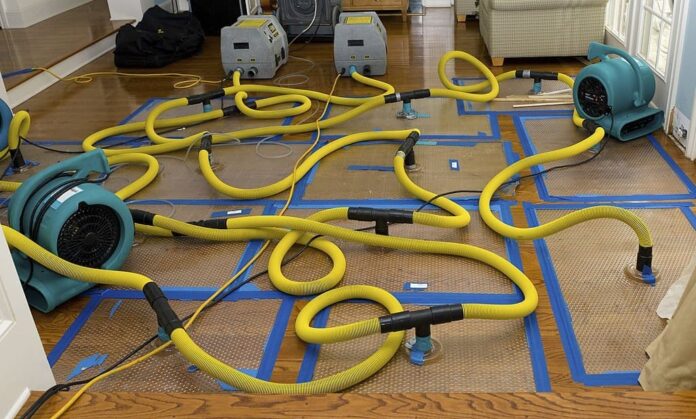Introduction
In a world where unforeseen disasters like fires and floods can disrupt lives in an instant, the importance of effective restoration cannot be overstated. The aftermath of such incidents can leave individuals and communities grappling with not only physical damage but also emotional distress. This article delves into the realm of fire and flood damage restoration, focusing on how expert solutions contribute to restoring peace in the face of adversity.
Understanding the Impact of Fire and Flood Damage
Fires and floods are relentless forces, causing widespread destruction to homes and businesses. The impact extends beyond visible damage, affecting the mental and emotional well-being of those affected. Understanding the profound consequences of these incidents is the first step toward appreciating the need for comprehensive restoration efforts.
Restoring Peace The Key Goals of Restoration
The primary goal of restoration is to bring peace back into the lives of those affected. This involves not only repairing physical damage but also addressing the trauma and disruption caused by the incident. Restoring a sense of normalcy becomes a crucial aspect of the restoration process.
Professional Expertise in Fire and Flood Damage Restoration
Attempting to navigate the complexities of restoration without professional help can exacerbate the challenges. Expertise in assessing damage, planning restoration efforts, and executing them efficiently is paramount. Professionals bring a level of knowledge and skill that ensures a smoother and more effective restoration journey.
Step-by-Step Restoration Process
Restoration is a multifaceted process that unfolds in stages. From initial assessment and damage control to reconstruction and final touches, each step plays a vital role. Understanding the sequence of these steps provides insight into the comprehensive nature of restoration.
Utilizing Advanced Technologies in Restoration
Technological advancements have revolutionized the field of restoration. From sophisticated equipment for damage assessment to innovative methods for rapid restoration, technology enhances the efficiency and effectiveness of restoration efforts. Embracing these tools is key to staying ahead in the restoration industry.
Perplexity in Restoration Challenges
Restoration projects often encounter perplexing challenges, from intricate structural damage to the emotional toll on individuals. Addressing these challenges requires a combination of expertise, creativity, and adaptability. Navigating the complexities ensures a more successful restoration outcome.
Burstiness: Adapting to Rapid Restoration Needs
The concept of burstiness, the need for rapid response and adaptation, is crucial in the restoration industry. Time-sensitive situations demand quick and agile solutions. Restoration professionals must be prepared to adapt to the unpredictable nature of disasters, ensuring a swift and effective response.
Maintaining Specificity in Restoration Solutions
Restoration is not a one-size-fits-all endeavor. Tailoring solutions to the specific needs of each situation is essential for optimal outcomes. Specificity in restoration ensures that every aspect of the damage is addressed, leaving no room for overlooked issues that may resurface later.
The Role of Community Support in Restoration
Community support is a cornerstone of successful restoration efforts. In times of crisis, neighbors, friends, and local organizations come together to provide assistance and solidarity. Collaborative efforts amplify the impact of restoration, fostering a sense of unity and resilience within the community.
Case Studies: Successful Restoration Stories
Real-life examples illustrate the transformative power of expert restoration. Stories of homes and businesses that have been successfully restored after fire and flood damage showcase the positive impact on individuals and entire communities. These case studies serve as beacons of hope and inspiration.
Ensuring Contextual Understanding in Restoration
No two restoration projects are the same. Understanding the unique context of each situation is paramount. Whether it’s a historic building or a modern residence, a nuanced approach that considers the specific circumstances ensures a more effective and lasting restoration outcome.
The Human Touch in Restoration Services
Beyond the technical aspects, the human touch is integral to restoration services. Empathy, understanding, and clear communication create a positive experience for those undergoing the restoration process. A compassionate approach acknowledges the emotional toll of the incident and fosters trust between professionals and clients.
Future Trends in Fire and Flood Damage Restoration
The landscape of restoration is continually evolving. From sustainable practices to AI-driven solutions, emerging trends shape the future of the industry. Staying abreast of these developments ensures that restoration professionals are well-equipped to address the challenges of tomorrow.
Conclusion
In the realm of fire and flood damage restoration, expertise is not just a luxury—it’s a necessity. Restoring peace goes beyond repairing physical damage; it involves addressing the emotional and psychological impact on individuals and communities. The journey toward recovery is paved with careful planning, technological innovation, community support, and the human touch.
FAQs
- How long does the average restoration process take?
- The duration varies based on the extent of damage, but professionals strive for efficient and timely restoration, considering the urgency of the situation.
- Is it possible to salvage items damaged by fire or flood?
- Yes, professional restoration services often include efforts to salvage and restore valuable items affected by fire or flood damage.
- Do insurance policies cover the cost of restoration?
- Many insurance policies cover the cost of restoration, but the extent of coverage depends on the specific terms and conditions of the policy.
- Can DIY methods be effective in small-scale restoration projects?
- While minor repairs can be attempted, it is advisable to seek professional assistance to ensure thorough and comprehensive restoration, especially in larger projects.
- What measures can individuals take to prevent fire and flood damage?
- Implementing preventive measures such as regular maintenance, installing safety systems, and being aware of potential risks can significantly reduce the likelihood of fire and flood damage.






